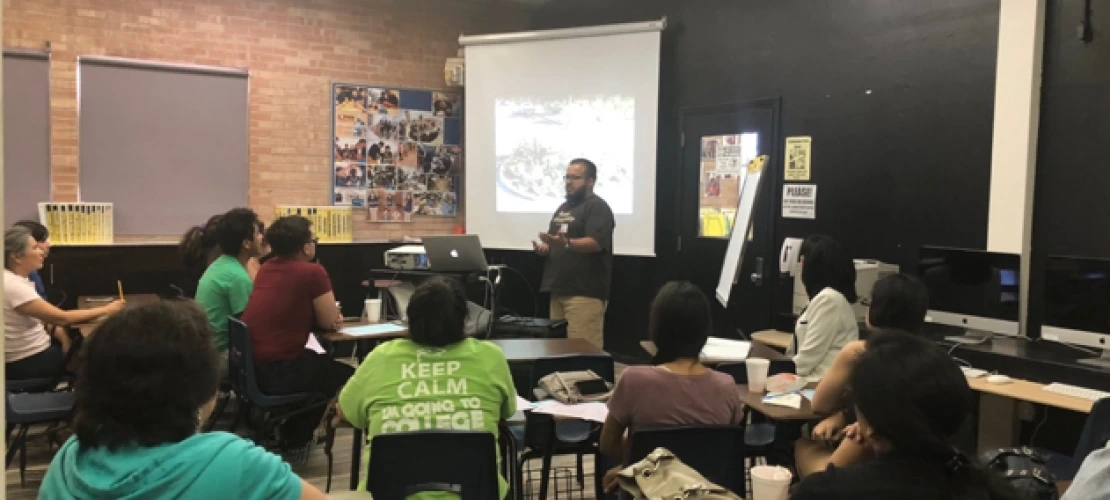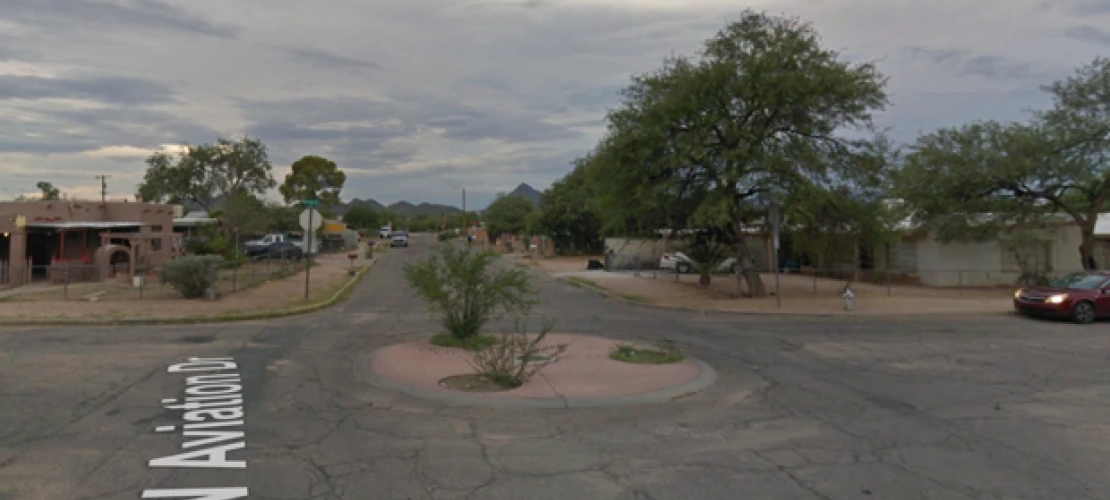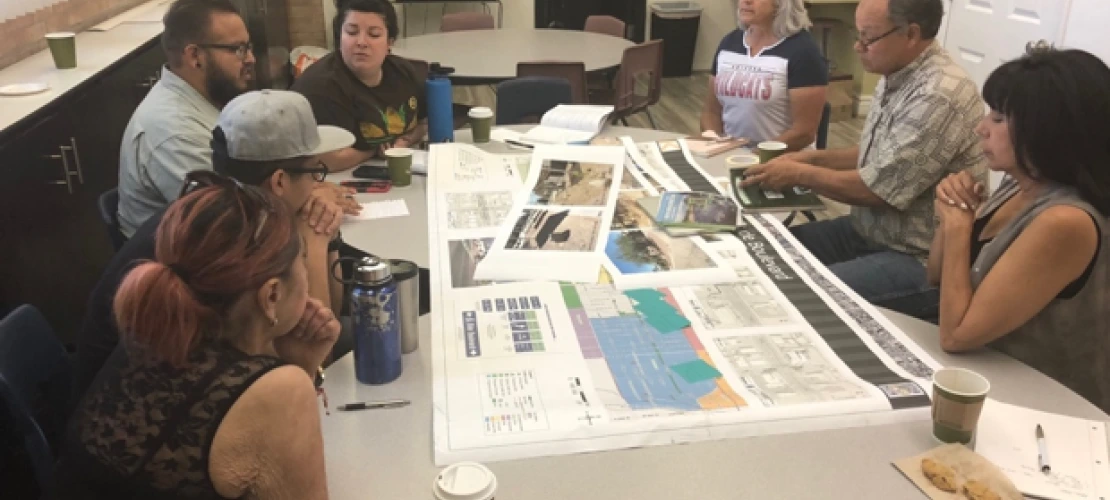The Haury-funded project Tucson Verde Para Todos seeks to engage communities in the south side of Tucson around green infrastructure (GI) to increase social ad ecological resilience. There are three main community engagement paths we are following that include engagement with (1) STAR Academic High School, (2) Hollinger Middle School, and (3) Lapan College Club. These engagements are leading to the introduction of green infrastructure in K-12 curriculum, GI design and implementation, and GI maintenance through the adoption of traffic circles. Our engagement with Lapan College Club represents the design and implementation of GI and the adoption of traffic circles.
The Lapan College Club dates back to 2005 with an incentive program for high school students. The club would pay $50 for every “A” that the students get in their report card. Initial activities also included helping students find scholarships, which would later become the College Readiness Program. Then they expanded their work to have one-on-one mentoring programs, a soccer league, robotics, professional portfolio sessions, theater company, and more. All of the above activities require parents’ support and they have a full cycle for the students. The best students become mentors of the next generation and they receive a stipend for their work. Lucy remarked, “Our kids become our staff.”
Our initial conversation with the Lapan College Club began on August 1, 2017. We met with Director Lucy Kin and her colleague Alan Voelkel, at their facilities located in the Wakefield School grounds on the corner of 9th Avenue and 44th Street. We learned about their different programs including a community garden with orchards that promotes healthy eating, a program that supports Deferred Action for Childhood Arrivals – or DACA – students with scholarships for college, mentoring programs with middle school, high school, and college students, and internship opportunities. The mission of the club is to help students graduate from college debt free.
During this first dialogue, we introduced our environmental justice project to the representatives of the Lapan College Club. Our partner from the City of Tucson, Department of Transportation, Andy Bemis, also attended the meeting and he spoke about the Liberty Bike Boulevard and the plans of the city. Director Kin was surprised that this was going on without the community knowing about it. Lucy talked about a case where the city planted some trees nearby but these eventually died. The community did not know that they were supposed to take care of the trees. They did not know their role because they were never consulted. “One of the biggest injustices there is here is the lack of communication,” Lucy Kin said. She added that the space for community engagement is needed. She was surprised that this project funds engagement because this is not very common. She offered us to use the Lapan forums to talk to the people.
After this initial engagement with the Lapan Center, we continued our work engaging with another school around the middle section of the Liberty Boulevard – STAR Academic High School. In the meantime, we learned about the road enhancements planned by the City Department of Transportation and identified a series of traffic circles along Liberty where we could engage with residents before they start their work. We reached back to the Lapan College Center a few months later with the possibility of adopting a traffic circle along Liberty close to their site.
We continued the conversation with neighbors and Lucy Kin at the Lapan College Club in the spring 2018. This dialogue focused on the two traffic circles at the north of Liberty Boulevard – Aviation and Veterans Rds. Our TYLO partners were able to secure the adoption of these two traffic circles by members of the community. We also invited Marsha Flores, the Principal at STAR Academic High School to join the conversation. Connecting communities is one of the objectives of the project and this proved to be useful for the project. Marsha volunteered to adopt a traffic circle near her school and have the students adopt it and maintain it.
Here we discussed the importance of having input from the community. “The traffic circles can represent the community,” Director Kin commented. We talked about the possibility to include art pieces and have similarities between the circles that connect people along the bike boulevard. Through a Visioning Event we could capture what the community wants for the traffic circles. TYLO representative, Claudio Rodriguez suggested inviting people to bike along Liberty Blvd on Friday evenings. “We could do bike nights or bike tours,” he replied. Connecting people in this area can take different forms, but the goal is to expand social networks and strengthen communities.
The importance of communicating to the community that Liberty Blvd is a bike route is crucial because most people don’t know about it. There is a lack of signage and public education. We discussed the possibility of creating signage for the road, and engaging with the neighborhood to see if there is any interest. As a first step, our team attended the parents’ meeting at the Lapan College Club on May 3, 2018. Here, Director Kin gave us a time to present our project and discuss opportunities with adopting and maintaining traffic circles, the bike boulevard, and about forming a bike club to bike tours along Liberty Blvd. Next steps include communications with the city to coordinate construction of the bike boulevard, particularly traffic circles, with GI design, implementation, and adoption.




